The NEMA 14-50 is a 240-Volt 50-Amp socket. A 240-volt dedicated circuit installed for higher-power devices can be wired as a 14-50 line. High power devices such as electric stoves or welders, are typical applications for level 2 chargers. They are also often used for RV and mobile homes.
The NEMA 14-50 standard socket is US-based and most commonly used for charging electric vehicles. With an appropriate EV charger, it can be used to completely recharge a modern EV battery in fewer than 8 hours.
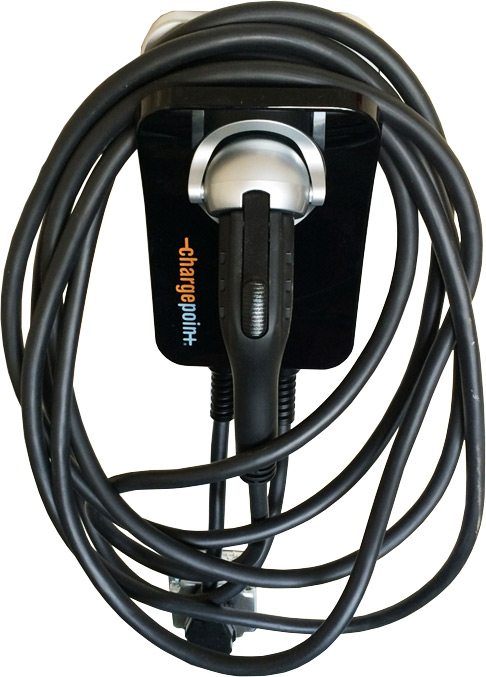
14-50 NEMA chargers are a type of pluggable device that plugs into an outlet. Some similar devices may be hard-wired to the power grid, thus restricting them from moving.
All of the chargers models under consideration are widely compatible with various non-Tesla electric cars thanks to the J1772 connector. It also charges Tesla cars perfectly when using the included adapter.
The NEMA 14-50 standard specifies a maximum current of 50A. However, according to the NEC 1 , only 80% of the maximum power is allowed for continuous use. This means that plugging in any charger (even one labeled 50A) will not produce more than 40A for an EV.
Jump to the comparison chart.
Why do customers choose plug-in devices over hardwiring?
1. The charger remains mobile. It can be unplugged at any minute, stowed in the trunk, and used elsewhere.
2. When traveling, you can find access to a 240V outlet, such as for an RV, where the charger plugs in easily.
3. There is an option to plug the charger into your own dryer outlet via an extension cord. This is relevant when you do not want to or cannot have new wiring put in.
4. If your unit becomes defective during the warranty period, you can easily unplug it and send it to the manufacturer for replacement. And you don’t need to call an electrician to remove it.
5. You can use cheaper NEMA extension cords, as opposed to J1772, when someone parks in the driveway needs to charge it.
6. Even if a new outlet has to be installed, the cost won’t exceed the hard installation.
Comparison chart of the best NEMA 14-50 EV Chargers
| Image | Product | |
|---|---|---|
Best Choice  | ChargePoint Home Flex 16 to 50 Amp • NEMA 14-50 Tesla and non-Tesla charger
| Check Price READ OUR REVIEW |
Also Great 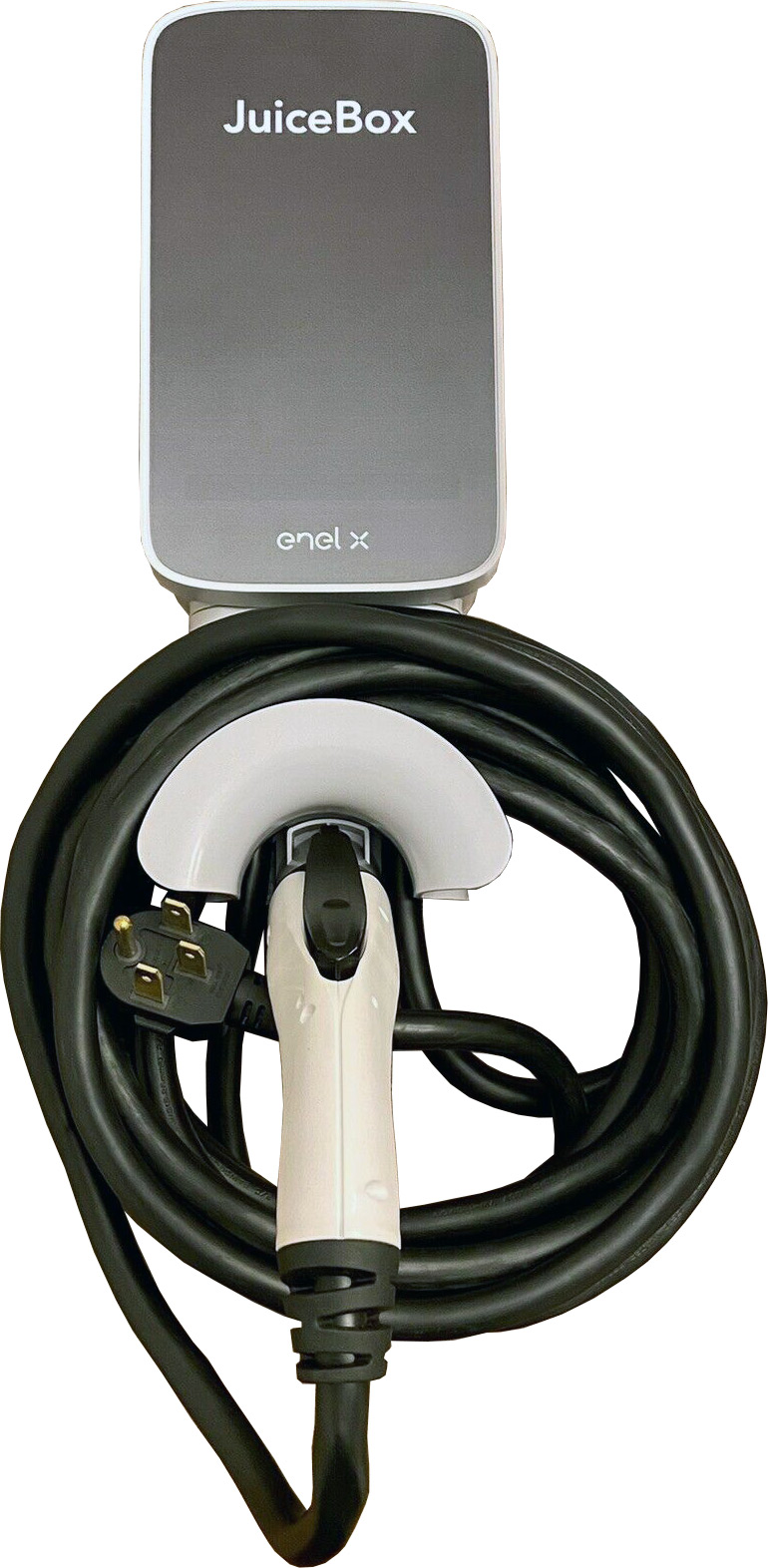 | JuiceBox 32A • NEMA 14-50 Level 2 charger
| Check Price READ OUR REVIEW |
Also Great  | MEGEAR 16A • NEMA 14-50 Charger
| Check Price READ OUR REVIEW |
Also Great 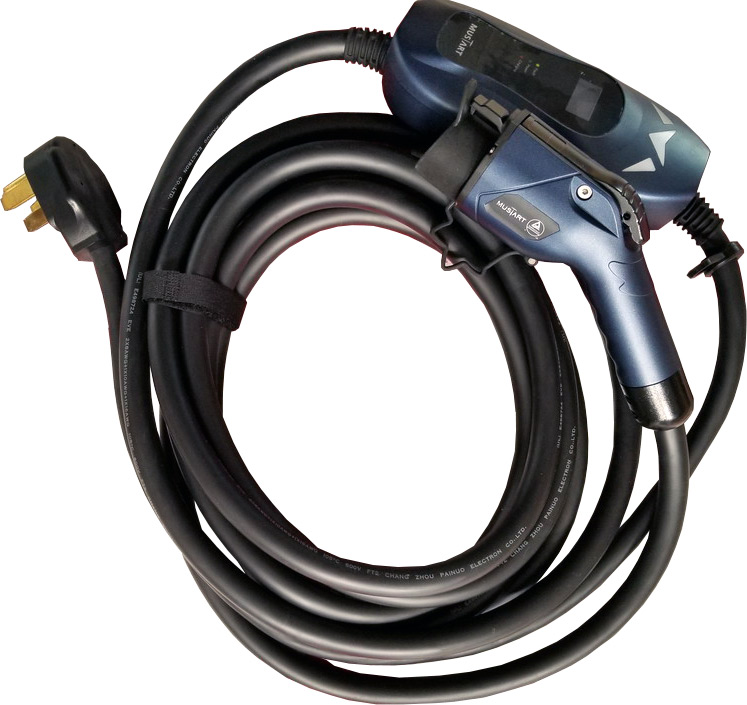 | MUSTART 40A • NEMA 14-50 electric car charger
| Check Price READ OUR REVIEW |
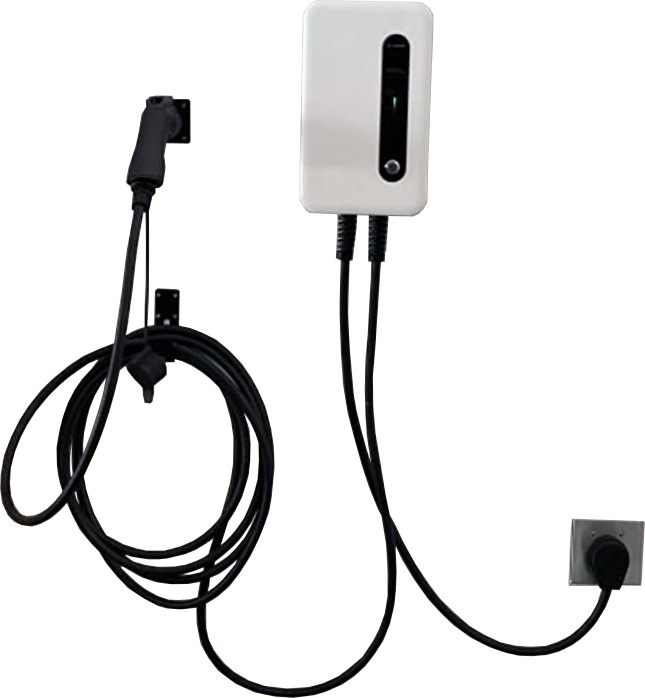 | LEFANEV 32A • NEMA 14-50 EV charger
| Check Price READ OUR REVIEW |
#1 ChargePoint Home Flex 50A — Portability and stability
ChargePoint is one of the most innovative EV chargers on the market. With its sleek design and high-power output, you’ll never go back to a slow charger. The price of the device is above average, but users note the stability in operation. The equipment, in case of power surges, reliably resumes power to the electric car.
This Wi-Fi-enabled charging station offers smart features that can be seen through the ChargePoint app. It can charge at 16 amps to 50 amps, giving drivers the ability to pick the speed that’s right for them and their home’s electrical supply. Although the manufacturer specifies a maximum power of 50A, as with other charging stations it is limited to 80% of the breaker (so you get 40A).
The Charger is UL-Listed and ENERGY STAR-certified. It comes with customer support 24/7 for 3 years. ChargePoint can be installed by any electrician. It can charge at 16A to 40A and comes with a 23-foot charging cable and either a NEMA 14-50.
ChargePoint is fast, reliable, and easy to plug in. This EV charger is compatible with most EVs; no matter the make or model you’re cruising in, you can plug into this for a safe charge that won’t let you down.
You’ll enjoy this charging station because it will power up fast and the cable length is fantastic at 23ft! To save money, it can be programmed to suit your needs with an adjustable timer, so come back to it at night to recharge at the nightly rate. With its incredibly easy NEMA 14-50 installation, ChargePoint Home Flex Cable chargers are perfect for home or portable use.






#2 JuiceBox 32A — Convenient cord storage
Introducing the JuiceBox EV Charger. Get up to 5 times faster charging for your electric vehicle with 32 amperes and 7.7 kWs! Powered by 240 volts, Juicebox is the perfect plug-in installation for any household looking to juice on the go! With efficient use of power and smart grid savings when you schedule your charging times at lower rates, it makes driving affordable without weakening your wallet or depleting the environment with costless emissions. With all that said, users note that setting up Wi-Fi is not the easiest on the device.
The device is capable of balancing the load when another charger is on the grid, protecting the circuit, which is relevant for multiple EVs.
The water-resistant housing allows the device to be installed in a variety of environments. Convenient cable management makes it easy to organize your space, thanks to the moderate flexibility of the 25-foot wire.






#3 MEGEAR 16A— Not smart, but a sufficient solution.
For wall mounting it has a special lock, which, however, allows you to remove the device and put it in the trunk during a long trip.
A short cable may do the trick if the electric car port is nearby. Otherwise, the user may incur additional costs for an extension cord.
The charging station has been enhanced with new technology for safer, more dependable protection. Leakage and overvoltage, as well as overcurrent and power-on self-test and fault recovery functions are all provided.





#4 MUSTART 40A — Ultra compact model.
This ultra-lightweight portable charger has a compact design. Unlike its predecessors, which also had no WiFi commutation, this model is equipped with a display with current power, temperature sensor, and charging time indication.
If you intend to transport the unit, it will easily fit in a travel bag (included) and will weigh no more than 12 pounds. The cable is an excellent 25 feet long, with medium-flex materials and is quite flexible compared to models in this price range.
For stationary use, it lacks an organized cable storage box around which a long coil can be wound. But it’s worth noting that the plug-in and wire won’t be lying around on the floor; 2 wall clips are included, one for the handle and one for the cable. There are also special hinges for affixing the control box, but they do not fix the device too firmly.
A sufficiently high dust and moisture resistance rating of IP67 will not interrupt charging in rainy weather. User feedback on the quality is not bad, but the manufacturer could give a warranty of more than 1 year.






#5 LEFANEV 32A — Sturdy box.
This model already resembles the usual stationary box, although it can be loaded into the trunk. Compared to other models, this one has a large display with the current charging power readings. Bright light indication will not allow you to be confused when the car is charged and clearly indicates the other statuses.
When the multi electric gadget is switched on, a power leveler at the station balances it to keep the station running at a constant current without causing sparks or other safety concerns.
If convenient portability is important to you, there is a metal wall bracket mounted on the wall with a kit for installation. The special hook included in the kit comes in handy for storing the cable on the wall.
The lack of communication with Wi-Fi has not deprived the sympathy from users for this device. Reliability and high stability is confirmed by the sturdy case.
The declared maximum power of 7.7 kWh of the device is assured.






How long does it take to charge an EV with a NEMA 14-50 charger?
| Tesla Model 3 | Ford Mustang Mach-E | Chevy Bolt | |
| ChargePoint Flex 50A | 3 h 54 min | 5 h 23 min | 5 h 30 min |
| JuiceBox 32A | 3 h 54 min | 7 h 42 min | 5 h 30 min |
| MEGEAR 16A | 7 h 54 min | 15 h 36 min | 10 h 25 min |
For other EVs or EVSEs, you can calculate the time using the calculator.
How do I choose the right home charging station for my EV?
You should consider the following factors before purchasing a home charging station:
1) What is your daily driving range?
2) Do you have access to an electrical outlet at your parking spot?
3) How much power will you need to fully recharge your car overnight? (see below for a list of average power requirements)
4) Are there any local or state rebates or incentives available to offset the cost of a home charging station? If so, you’ll need to do some research into what is available in your area.
5) How much will it cost? You can find this information by checking with your local utility company.
6) Will you be able to install it yourself? Some people might not have the technical know-how, so for them, hiring an electrician is a must.
7) Does your current electrical panel provide enough amperage for your new charger? You can use this link to get an estimate on your amperage needs.
8) How long do you want it to take to recharge your car? If you’re looking for a rapid-charging station, keep in mind that they can recharge up to 80% of the battery pack in about 20 minutes. If you’re more interested in a standard charger, it can take up to 5 hours or more for a full charge.
9) How do you want to pay for the system: with cash, loan, lease, etc.? If you’re not able to purchase and install your own charging equipment at this time and need to rent2 one, keep in mind that most EVSE providers also charge installation fees. Be sure to do the math and compare what you’d pay in monthly rental charges vs. what it would cost to own your own NEMA 14-50 charging station over a certain period of time.
FAQ
What is a NEMA 14-50 connection?
This is a plug and socket connection, more often 240 volts, and capable of outputting 40A to the device.
Is there a power limit on outlets for chargers?
The NEC requires that the maximum power of the devices connected through the socket must not exceed 40A. With NEMA 14-50 outlets, the power is limited to 80%.
What is the disadvantage of plug-in EV charger versus hardwiring?
The socket is limited to 40A power. With a hardwired connection, it is theoretically possible to install higher wattage chargers. However, not all electric car models support higher amps.
At what maximum power can I charge an EV or Tesla at home?
Most EVs have a limit of 48 amp when charging with alternating current, which is exactly what is used in domestic power grids. For direct current, the limits are much higher, which allows you to charge the car several times faster. You can find out the limits for your specific vehicle in the vehicle data sheet or by using the calculator we have developed.
Do I have to attach the charger to the wall in any way?
To install the EVSE, make sure it is mounted on a wall and does not require you to plug it into an outlet. Outlets are not designed to support the weight of an EVSE.
Can I plug the charger into the outlet from the dryer?
Technically you can do it. There are also special certified extension cords. Regardless, a dedicated NEMA outlet is highly recommended. Have an electrician verify all the wiring is in compliance with local code requirements and then connect to the outlet.
Can an extension cord with a NEMA 14-50 charger be too long?
J1772 extension cables are frequently at 40 feet. If you want to wire a NEMA 14-50 electrical outlet for a 40-amp circuit, you’ll only come across 50-foot sections. If you are wondering what is the best type of extension cord to choose, then take a look at the review of the best extenders with a comparison.
What are the benefits of using NEMA 14-50 for a home EV charger?
It provides up to 40 amps of power (not 50), allowing you to charge your EV quickly and conveniently. This plug-in connection has a maximum power limit for the chargers that Mike Becker compares in this review.
What type of EV charger requires a NEMA 14-50 connection?
The main requirement is a NEMA 14-50 plugin (no hardwired connection or 6-50; 14-50 connectors will do). These are the models of chargers featured in this professional review from EVadept.
Are NEMA 14-50 plugs compatible with all types of EV chargers?
No, not all NEMA 14-50 plugs are compatible with all types of EV chargers. Make sure the plugin socket on the charger is compatible with your specific outlet before buying. To ensure you don’t make a mistake, check out this overview of the best models for NEMA 14-50.
How much power can a NEMA 14-50 plug-in provide for EV chargers?
With a whopping 40 amps, 240 volts, and 9,600 watts. It can provide plenty of power for most EV owners. That’s the maximum power for plug-in chargers, the best models of which are featured in this review.
What is the difference between a NEMA 14-30 and NEMA 14-50 connection for EVSEs?
The only difference is the amount of power and the shape factor of the connector. Chargers with a 14-30 connection will only get 5.8 Kw, and with a 14-50 connection they will get 9.6 kW. Check out the top rated models with the 14-50 plug in this comparison.
Is there a comparison between the EV charging speed of a NEMA 14-50 and a NEMA 14-30 plug-in?
In this comparison, the speed will differ almost twice as much. You can get a detailed comparative charging report from the EVadept calculator.
Is there a difference between a NEMA 14-50 and a NEMA 6-50 EV chargers?
The difference is in the form factor, but the power output of the 14-50 and 6-50 is the same. The 14-50 models are more common, and you will get a replacement faster if it breaks. Check out the list of chargers with a warranty from EVadept.
Which EV charger is better than the 14-50 or the 6-50?
For EVadept customers, it was faster to replace the most common models of 14-50 devices under warranty. Amper rate is the same for all of them. Expert rating of 14-50 devices published by Mike Becker.
Which EV charger is better than the 14-50 or the 14-30?
The NEMA 14-50 charger will provide a faster charge than the 14-30 charger, so if you need a faster charge, this may be the better option for you. The experts recommend the 14-50 because it’s almost twice as fast and compare the models in this review.
What is the typical amp rating of a plug-in EV charger?
32A and 40A chargers are the most common. EVSEs with 40 amps are connected via a NEMA 14-50 connection. A rating of these devices is available here.
How much power can a NEMA 14-50 plug provide in kW for ChargePoint Flex?
A NEMA 14-50 plug can provide up to 40 amps at 240 volts, resulting in 9.6 kW of power for an EV charger. This is a lot of power and is usually reserved for larger EV charging stations, a comparison of the best models can be found here by Mike Becker.
Does an EV charger require a dedicated circuit breaker?
Yes, you do need to install a dedicated circuit breaker for your EV charger. Observe the 80% rule, meaning that for a 40A EVSE, install a 50A circuit breaker. This is to ensure that your EV charger is properly installed and functioning properly. Additionally, it will help protect your EV from potential electrical fires.
Are there any limits on the number of NEMA 14-50 EV chargers that can be installed in a single circuit?
It depends on the rate of the breaker and the load sharing feature in the chargers. If you want to charge 2 cars at the same time, then take a look at Dual Charger.
Do all NEMA 14-50 EVSEs have the same EV connection type?
No, most models have the J1772 plugin, and only TWC/UMC have the NEC (Tesla) plugin. If you have something other than a Tesla, take a look at the NEMA 14-50 device comparison in this expert review.
Can a NEMA 14-50 outlet be used with a NEMA 14-30 EV charger?
If you do not change the connector (which we do not recommend), these plugins have different pins and will need a special adapter. Do not use the adapter all the time, as it is not safe.
Are there any specific safety requirements when using NEMA 14-50 plug-in EV chargers?
- Always read and understand the safety instructions that come with your plug-in charger before using it;
- Use a UL-certified EV charger (list is here);
- Make sure the charger is correctly connected to a wall outlet before plugging into your vehicle; never attempt to open or repair the charger;
- Do not leave it unattended while in use.
Does the installation of a NEMA 14-50 home EV charger require any special tools?
If you have an outlet in a suitable place, it is often just enough to plug the plug into a socket. Depending on the type of devices, sometimes it is more convenient to mount it on the wall. Compare the different types of devices from the EVadept team’s detailed review before you buy.
Are there any compatibility issues when using a NEMA 14-50 plug-in?
Plug-in connections are less reliable than hardwired connections for EVSEs because they are prone to loose connections and can be a safety hazard.
How fast does NEMA 14-50 charge?
This kind of charger translates to roughly 7.2 to 9.6 kW of power (depending on EVSE). The charging speed of NEMA 14-50 is usually around 10 to 20 miles of range per hour of charging. Check out Mike Becker’s calculator for your vehicle’s charging speed.
How much is a NEMA 14-50 ev home charger in the US?
The most basic models cost around $300, whereas more advanced models can cost up to $1,500. EVadept recommends the UL-certified models in this review.
How much do home EV charging stations cost?
Prices can go as low as $1,500. If you want to save money, it is better to choose a plug-in battery charger. The most powerful socket is NEMA 14-50, so the experts here have reviewed the best models for this type of connection.
How long are home EV charging cables?
The length of home EV cables can vary, depending on the type of charger you purchase. However, most home EV chargers use a 25-foot cable. For a temporary connection, a special extension cable is used. J1772-to-J1772 is safer than a NEMA 14-50.
Which home EV charger should I buy?
The best option depends on your needs. You may want to consider a basic model from $400. If you’re looking for more power, then you may be interested in a faster model with higher amps. Check out the comparison chart in this review.
Who installs high power home EV chargers?
Certified electricians when we’re talking about hardwired connections. However, you can save money if you have a 240-volt outlet. Choose a plug-in NEMA 14-50 charger from the ones recommended in this post and enjoy easy, fast charging.
What’s the best outlet for an EV charger?
If you want maximum power, choose a NEMA between the 6-50 and the 14-50 range. The 14-50 type is more modern and popular, so you can see many more top-rated models in this review from the experts.
What’s the best alternative to the NEMA 14-50 outlet?
Nema 6-50 if you’re thinking about what to replace the 14-50 with. However, the 14-50 is the more modern and popular type.
Which socket should I install for the L2 EVSE?
NEMA 14-50. This is the more advanced type. Explore a comparison of top-of-the-line charger models for this type.
What NEMA connector does chargepoint flex use?
It uses two types of plugs available on the market today. NEMA 14-50 and 6-50. Both have the same power rate and will provide the Flex with 40 amps. Before you buy, read here about the drawbacks of chargepoint flex.
What kind of outlet do I need to charge my EV in the US?
In North America, NEMA 5-15 is most popular for slow devices. For fast devices, NEMA 14-50, 6-50, 14-30, and 6-20. In this review, experts explain why the NEMA 14-50 is the best choice and compare charger models.
Our pick
Our choice is driven by the factor of reliability combined with the highest performance for the Nema 14-50 standard. The ChargePoint Home Flex 40A is in the highest priced, but it has proven certifications and the highest customer satisfaction rating. This manufacturer has established itself not only among home devices but above all among equipment for public networks.
| No Time for Research? Get the Best |  |
Best choice • ChargePoint Home Flex 50A | Check on amazon |
Contents
- 1 Why do customers choose plug-in devices over hardwiring?
- 2 Comparison chart of the best NEMA 14-50 EV Chargers
- 3 #1 ChargePoint Home Flex 50A — Portability and stability
- 4 #2 JuiceBox 32A — Convenient cord storage
- 5 #3 MEGEAR 16A— Not smart, but a sufficient solution.
- 6 #4 MUSTART 40A — Ultra compact model.
- 7 #5 LEFANEV 32A — Sturdy box.
- 8 How long does it take to charge an EV with a NEMA 14-50 charger?
- 9 How do I choose the right home charging station for my EV?
- 10 FAQ
- 11 Our pick
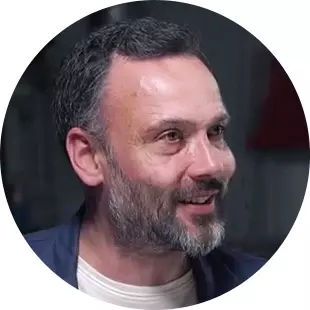
I recently got my hands on a NEMA 14-50 charger for my Tesla Model 3 and I’ve gotta say, it’s life-changing. Now I just plug in overnight and I’m good to go in the morning. Charging speeds are as promised, roughly 20 miles per hour. Overall, it’s a game changer. So what’s your go-to home charger, folks?
Hey, I’m in the market for a new charger. Is it true that some EVSEs can’t really make full use of the NEMA 14-50’s power capacity? Also, how does the NEMA 14-50 compare to the NEMA 6-50 in terms of charging speeds?
Good question. EVSEs vary, but that’s more an EVSE issue than a NEMA 14-50 one. I’d personally recommend the 14-50 for its wide compatibility.
If you’re thinking of installing a NEMA 14-50 outlet yourself, let me break it down for ya. Turn off the main circuit breaker, run a 4-wire cable, connect the wires, and don’t forget grounding. Safety first, always! Anyone else installed it themselves?
Hi all! I need a new EV charger for my Nissan Leaf but I’m on a budget. Any suggestions on the most cost-effective NEMA 14-50 compatible chargers out there?
Gotta vent here. Bought a NEMA 14-50 charger online and it’s a lemon. Barely adds 10 miles per hour and sometimes trips the circuit. Anyone else experienced something similar?
That’s unfortunate. Sounds like you got a defective unit. If it’s still under warranty, I’d suggest returning it asap.
I’ve used both the Tesla Wall Connector and a generic NEMA 14-50 charger. Performance-wise, not a big difference. Both deliver around 20 miles per hour of charge. What do you think? Tesla’s connector or a generic NEMA 14-50?
Little tip for y’all. Make sure the outlet and your EVSE are in good condition. Dirty or corroded contacts can affect charging efficiency. A little bit of maintenance can go a long way!
Just got word that a major manufacturer will soon release an upgraded NEMA 14-50 charger with enhanced safety features. Expected to drop next month. Stay tuned!
Anyone interested in a group buy for NEMA 14-50 chargers? I found a supplier willing to give us a discount if we buy in bulk. Let’s save some money together!
Heads up, community. There’s a recall on some NEMA 14-50 chargers due to overheating issues. Check your model numbers and stay safe.
Good looking out. Always register your products so you can be notified of recalls. Keep an eye on those model numbers, folks!